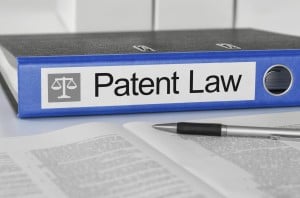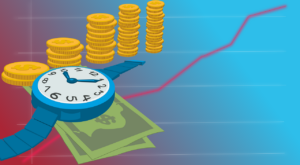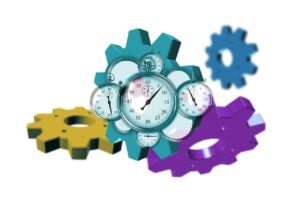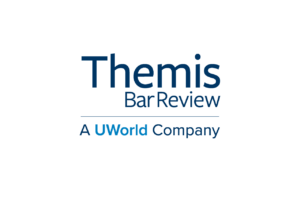3 Questions For A Professor, Inventor, Entrepreneur (Part II)
Insights on the challenges facing small companies and individual inventors in today’s patent system.
 This week, I continue my written interview with Northwestern’s Professor Dan Brown. Last week, Dan shared his views on how the current framework for dealing with willful patent infringement is hurting American inventors and patent owners. This week, we will get into a little more detail with Dan on his proposals for leveling the playing field.
This week, I continue my written interview with Northwestern’s Professor Dan Brown. Last week, Dan shared his views on how the current framework for dealing with willful patent infringement is hurting American inventors and patent owners. This week, we will get into a little more detail with Dan on his proposals for leveling the playing field.
Now to the remainder of my interview with Professor Brown. As usual, I have added some brief commentary to the answers below but have otherwise presented his answers to my questions as he provided them.
Gaston Kroub: Explain your proposal for providing criminal remedies for willful patent infringement exhibiting evidence of criminal intent?

How Savvy Lawyers Build Their Law Firm Rate Sheet
Dan Brown: In the U.S. we have evolved a cannibalistic system that rewards the efficient infringement strategy to compete, over a system that discourages infringement and encourages further innovation in order to compete. While there can be unwitting infringement that lacks criminal intent, bad-acting strategic infringers often rely on the fact that they can earn more money by infringing than they pay out in legal fees or penalties, and they know many small inventors cannot afford the hefty legal fees necessary to fight the more dominant infringer. This gambit has become a business model for many companies that are highly motivated to protect their territory from new innovative disruptive solutions.
While protecting one’s business is legal, deliberately engaging in unlawful or negligent acts to harm another business should not be. When confronted with this competitive threat, these bad actors are highly motivated by the current system to take advantage of this situation, often crossing the ethical line of criminal intent. It is simply easier, cheaper, and less risky for an infringer to pirate a patented product and fight the patent owner in court for years than it is to either negotiate a deal with the owner or attempt to design a non-infringing alternative. Surprisingly, willful patent infringement is not currently considered a criminal offense in patent cases, yet there are criminal remedy consequences for willful copyright, trademark, and trade secret infringement exhibiting criminal intent.
In the past, strong lobbying from the music, film, and software industries convinced Congress to change the punishment through the Digital Millennium Copyright Act of 1998. It is evident that when penalties are not sufficient enough to discourage the behavior, pirates will take the gamble and choose to infringe rather than invest the time and effort needed to develop a better solution. The current system is rewarding this intentional risky behavior and, at the same time, undermining the incentive to innovate because of this lack of real consequences and punishment. This is a classic example of moral hazard; we have seen it happen in the past in other playing fields. Without raising the upfront risk for pirates choosing to game the system by increasing the severity of the punishment, the pirate behavior will continue to be the strategy.
GK: Professor Brown’s point of the incongruity of criminalizing certain forms of willful infringement in other areas of IP, but not in patent, deserves our attention. And the idea that the current system provides incentive for bad behavior by infringers has some merit, especially considering Brown’s prior experiences with his Bionic Wrench patent situation. At the same time, legislators would need to very carefully consider whether creating a criminal form of willful patent infringement would be the best approach to deterring willful infringement, or whether beefing up existing civil remedies might be enough. It is not an easy question, but I do see the perspective of inventors and patent owners that believe drastic steps must be taken to correct what they see as an unbalanced patent system.
Sponsored

How To Build And Manage Your Law Firm Rate Sheet

Back To Basics: 6 Tech Tips Every Small Firm Needs To Hear

Trust The Process: How To Build And Manage Workflows In Law Firms

Back To Basics: 6 Tech Tips Every Small Firm Needs To Hear
GK: Why is it important for patent owners to understand how litigation financing options have changed for financing their patent case against infringers?
DB: In the past (pre-AIA), under the best of circumstances an inventor believed that he/she had a legitimate patent that could be enforced. The inventor was afforded the presumption of validity for the patent which had been the standard for years once a patent had been awarded from the USPTO. In district courts the rate of invalidation at trial averaged around 20%. This meant the defendant infringer had an 80% chance of losing in court. In today’s system, post-AIA, the infringers now have another opportunity (IPRs) to further game the system outside of the district courts, by sending the issued patents to the PTAB for post-grant review in order to try to invalidate the patent and delay or avoid district court. At the PTAB, there is a very high rate of invalidation of one or more claims (80%) from the same USPTO that issued the patent which has emboldened infringers to take the risk of infringing. This has led to a presumption of invalidity by potential infringers, or at least a substantial raising of the chances of invalidation.
This new process, combined with the lack of available litigation funding for a patent owner trying to protect his/her rights, and the defendants not fearing penalties has seriously undermined the ability of an inventor to assert their rights for protecting their invention. Litigation funders are very aware of this change with the PTAB process. While efficient infringement existed prior to the AIA, the post-AIA invalidation rates have further enabled the gaming strategy and emboldened the piracy. Today, with the PTAB invalidations at such a high rate, the ability to secure third-party litigation funding is almost impossible, especially for litigations in smaller-dollar marketplaces. Thus, the inventor who followed all the rules, cannot reasonably protect that invention from infringement even when willful intent exists, because the infringers have recognized that the risk of losing is very low and litigation financing is only there when the potential awards are very high.
It would be a very rare case today that a litigation funder would step up to fund a patent infringement case for a small inventor, and even in that rare occurrence the case must be so substantial of a potential financial windfall that the funder would be willing to take the risk. This leaves the inventor with little option to protect their rights in most all cases. I do not see any hope for deterring this piracy business model without the raising of the punishment for willful patent infringement without providing criminal penalties as Congress did with trademarks, copyrights, and trade secrets. Absent this rebalancing of the risk/reward penalty for willfully infringing on a patent, or for the rate of invalidation of issued patents reduces substantially, I fear that the intentional and willful infringement game will continue, and inventors and society will continue to lose the innovation value that our founding fathers provided for us.
GK: There is a definite need in the market, whether from a more robust phalanx of patent litigators willing to take more cases on contingency or litigation funders willing to consider smaller-sized cases — both in terms of investment size and potential return — for inventors and small competitors for whom self-financing patent enforcement is impossible. At the same time, the risky nature of patent litigation for patent holders in the IPR era does discourage many patent litigators from considering patent enforcement for clients who can’t finance their cases, either themselves or with a litigation funder on board. It is important that patent owners be realistic about the prospects of getting their enforcement efforts considered by contingency lawyers and funders, even as the current market dynamics encourage trying to find other ways to stop infringement outside of a court process wherever possible.
Sponsored

Raising The Bar in Bar Prep

How Savvy Lawyers Build Their Law Firm Rate Sheet
My thanks to Professor Brown for the insights and cooperation, especially for his willingness to share his candid thoughts about the challenges facing small companies and individual inventors in today’s patent system. I wish him the best of luck in all of his ongoing endeavors and that he never loses his passion for innovation and inventing. Or for standing up as an advocate on behalf of others in a similar position to his.
I am always open to conducting interviews of this type with other IP thought leaders, so feel free to reach out if you have a compelling perspective to offer.
Please feel free to send comments or questions to me at gkroub@kskiplaw.com or via Twitter: @gkroub. Any topic suggestions or thoughts are most welcome.
Gaston Kroub lives in Brooklyn and is a founding partner of Kroub, Silbersher & Kolmykov PLLC, an intellectual property litigation boutique, and Markman Advisors LLC, a leading consultancy on patent issues for the investment community. Gaston’s practice focuses on intellectual property litigation and related counseling, with a strong focus on patent matters. You can reach him at gkroub@kskiplaw.com or follow him on Twitter: @gkroub.







